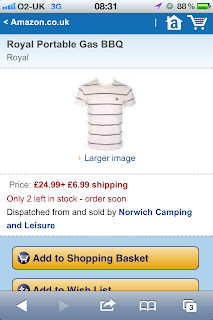Recently I've been a bit of a Quality Score fanatic, trying to get it as high as possible in my Google based PPC campaigns.
Although this has been a quest to find out the best way of optimising marketing budgets, it's also been a method for understanding just what does and doesn't affect on-page Quality Score.
As you probably know, Quality Score is calculated by Google via a mysterious combination of the advert, keywords used and the page you're directing users to. The more relevant Google thinks these are to each other, the better your QS. The best is 10 and the worst is 1.
Although this has been a quest to find out the best way of optimising marketing budgets, it's also been a method for understanding just what does and doesn't affect on-page Quality Score.
As you probably know, Quality Score is calculated by Google via a mysterious combination of the advert, keywords used and the page you're directing users to. The more relevant Google thinks these are to each other, the better your QS. The best is 10 and the worst is 1.
A quick point, if you want to find out your Quality Score, you can by looking at the 'keywords' tab in the 'campaigns' tab in your PPC account. Clicking on the white speech bubble  next to any keyword's status will reveal this calculated figure.
next to any keyword's status will reveal this calculated figure.
So what on-page attributes makes a difference? Well officially the three important factors affecting landing quality score are: relevant & original content, transparency and navigability (although page speed has been mentioned in several blogs, I'm uncertain about its actual influence in this metric).
Helpfully Google publishes its own advice on how you can optimise your site to make your Adwords efforts more cost effective:
http://support.google.com/adwords/bin/answer.py?hl=en&answer=2404197&from=46675&rd=1